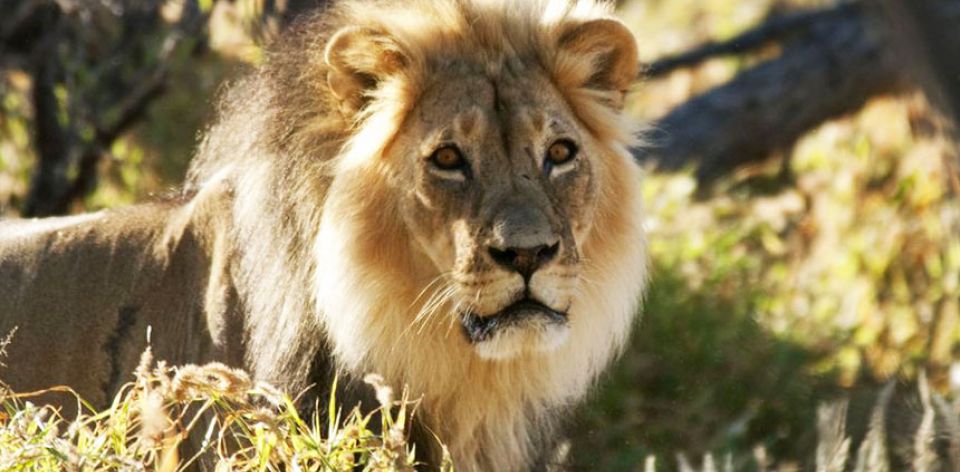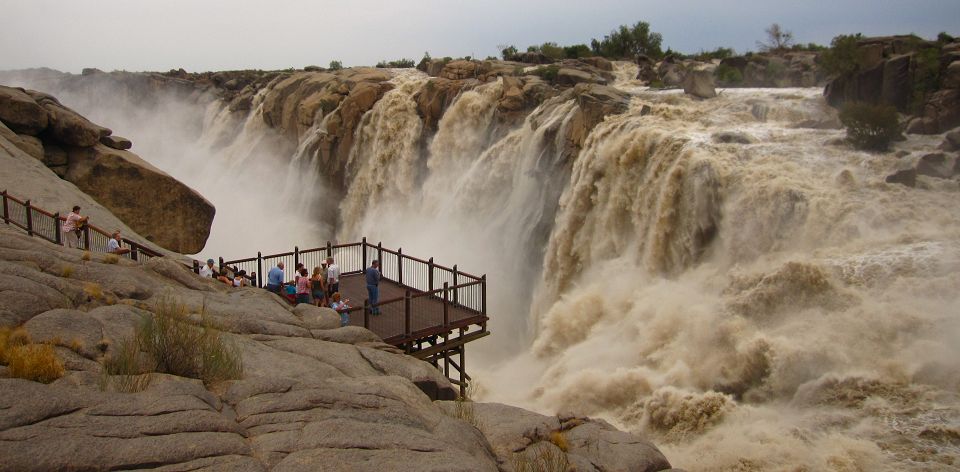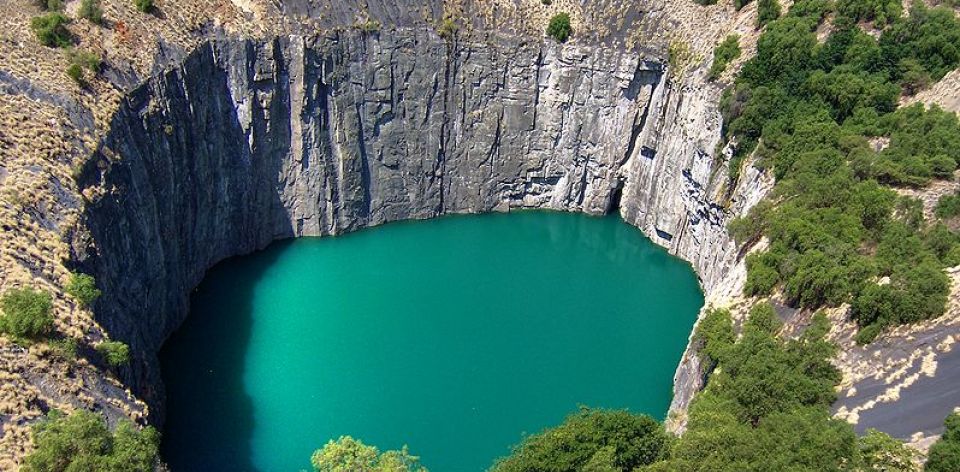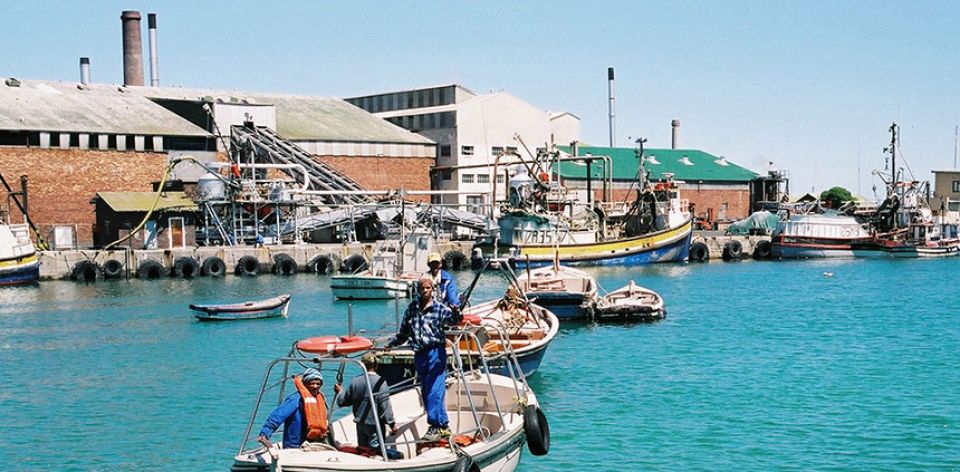Back roads and big sky country
The Northern Cape is the largest of South Africa’s provinces but has the smallest population, making it one of the more remote areas of the country. Among its key selling points are its vast, open spaces, unique vegetation – including the beautiful spring flower spectacle that transforms a semi-desert landscape – and the Kgalagadi Transfrontier Park, which is famous for its lions.
Kgalagadi Transfrontier Park
If you think the desert is bland, you’ve obviously never been to the Kalahari. It’s a magical place where dry landscapes and red dunes provide the backdrop to a singularly unique experience, one that can only be found in the Kgalagadi Transfrontier Park.

The Kgalagadi Transfontier Park is a fusion of the former Kalahari Gemsbok National Park of South Africa, which was set up to protect migratory game such as Gemsbok, and the neighbouring Gemsbok National Park in Botswana.
These two wild wonderlands were separated by nothing but an unmarked international border. They form an ecological unit of some 37 000 km² – a semi-desert wilderness of blonde grass, red dunes and enormous open spaces. All that was needed was to formalise the arrangement and co-ordinate ecology management. So in 2000, this became the first of South Africa's transfrontier ventures.
Authorities on both sides learnt much from the union, but tourists were the real winners, being able to move between the two parks, and thus two countries, without a passport (unless exiting on the other side, of course).
Managing the ecology of the Kgalagadi Transfrontier Park as a single unit has been a great step forward for desert conservation. Plus, the opening of the border crossing at Mata Mata has opened more than just access between South Africa, Botswana and Namibia.
This gateway has started talks about creating a corridor linking this giant park to nearby Augrabies National Park, due south, and from there the Ai-Ais Richtersveld Transfrontier Conservation Area in the west. Just north of that is Namibia's 26 000km² Sperrgebiet National Park. That, in turn, abuts the Namib Naukluft National Park, one of the largest conservation areas in the world. If all goes to plan, they will all be linked in the near future.
Sustaining the spirit started by Kgalagadi may soon give rise to a mega-transfrontier park, protecting a desert storehouse of some of the most exquisitely adapted plants and animals on Earth. Proving that the African ethos of “Ubuntu” – sharing with your neighbours – really is the way forward.
Augrabies Falls
At the Augrabies Falls you will be awed by the water thundering down the gorge. There are also plenty of other attractions to explore nearby, including a wide variety of flowers and animals, and the inimitable views from the Moon Rock.

To understand why the Khoisan people referred to the Augrabies Falls as "the place of great noise", you need to come and experience them for yourself. Particularly when there has been plenty of rain and the Orange River is overflowing, you will experience the full might of the water as it thunders down the 56m-high falls. The might of this natural wonder will stay with you long after you have left the falls.
The Augrabies Falls are situated 120km to the west of Upington in the Northern Cape. They form part of the Augrabies Falls National Park, which is rich with endemic and indigenous plant and animal species.
On the menu of plant species is the enigmatic Quiver tree or Kokerboom (Aloe dichotoma). Traditionally, the Khoisan hunters made their quivers from this tree which dates back thousands of years and which produces vivd yellow flowers in May and June.
The Augrabies Falls National Park offers an ancient landscape that will take you back in time to the world of the first hunter-gatherers.
Just as they did thousands of years ago, if you sit silently you might be treated to the sight of a beautiful pair of klipspringers grazing - all the while keeping alert to the slightest sign of trouble from any of the predators, including leopards, jackals and the African wild cat. The klipspringers are not the only ones that are preyed upon. The park is the natural habitat for other antelope species such as steenbok, springbok, gemsbok, kudu and eland. You will hopefully see them all as you explore the park.
Complete your visit with a bird's eye view of the park from the top of the Moon Rock - a vast 'whaleback' dome which is a prominent landmark of Augrabies Falls. Walking to the summit will give one of the best views of the park and its surroundings.
Diamond Fields
Delve into the diamond fields of the Northern Cape and relive the days of the great and terrible diamond rush, when lives were ruined and fortunes were made, with a tour of historic Kimberley. Then head off through the battlefields of the Anglo-Boer war and beyond, into the Kalahari sunset.

Blood, sweat, tears, triumph, murder and despair ... such are the foundation stones of Kimberley, diamond capital of the world and gateway to the Kalahari and Diamond Fields of the Northern Cape.
Diamonds were first discovered in 1871 on Colesberg Koppie. It triggered rush fever which led to frantic mass diggings, culminating in what is now the Big Hole, the largest artificial construction to be found anywhere in the world.
Around this 365m-deep pit Kimberley sprang into being, impelled by the diamond rush that drew 30 000 miners to the diamond fields of South Africa. As time went by, prospectors' tents and shacks were replaced by tree-lined avenues graced by Victorian mansions, as Kimberley developed into a modern city.
A good starting point to relive these times is the Big Hole and Kimberley Mine Museum. After watching an introductory film at the visitor's centre, peer into the depths of the Big Hole from the Viewing Platform.
Admire the 616, the world's biggest diamond crystal, at the Real Diamond Display. See the old mining machines in the Pulsator Building.
Experience the mining conditions of yesteryear in the Underground Mine Experience, a recreated mine shaft. Then head on down to the Old Town, with its preserved and restored period buildings. Round off a memorable day with a drink at the famous Diggers' Tavern.
Thirsty for more? Kimberley has numerous other attractions. Walk through the historical city centre, take in the museums, monuments and art galleries in old stately homes, or explore the city's haunted corners on the Kimberley ghost trail.
Then prepare yourself to experience the rest of the Diamond Fields region. The Vaal River diggings at Barkly West; old Boer War battlefields at Modder River and Magersfontein; the still operational Bultfontein mine; all this and more beckons to the diamond fields.
The Diamond Coast
Are you looking to venture out on the road less travelled? Are you looking for alluring coastlines and rugged views that speak of romance? If this equation speaks to you then you absolutely have to check out the Diamond Coast.

Winding along the coast of the Northern Cape Province, you’ll find a place adventurers and fortune hunters throughout history have called home. And while you may not find your fortune here, you’ll definitely be romanced by its beauty and peacefulness.
Wild and rugged, the Diamond Coast can be found on the far north-western coast from Port Nolloth to the mouth of the Orange River. Situated in Namaqualand, it’s renowned for its rich plant life – especially in Spring when thousands of blooming flowers cover the landscape in a sea of colour.
Along the way you will find charming locations like Alexander Bay, a previously restricted diamond mining area, which can now be visited on organised tours. Or, if the dramatic shipwrecks along the Northern Cape coastline are more your thing, organised tours and hikes can be arranged for this as well, with a 4x4 trip through the coastal dunes forming part of the shipwreck trail.
If you’re feeling brave dare yourself to go for a dip in the very cold ocean. Or skip this step and move on to the small town of Port Nolloth where you can stay in a wide range of accommodation while you explore the Diamond Coast on foot – perhaps on a five-day hiking trail.
This piece of coastline is definitely off the beaten track, a perfect opportunity to rekindle a romance – be it with your partner or simply with nature.
